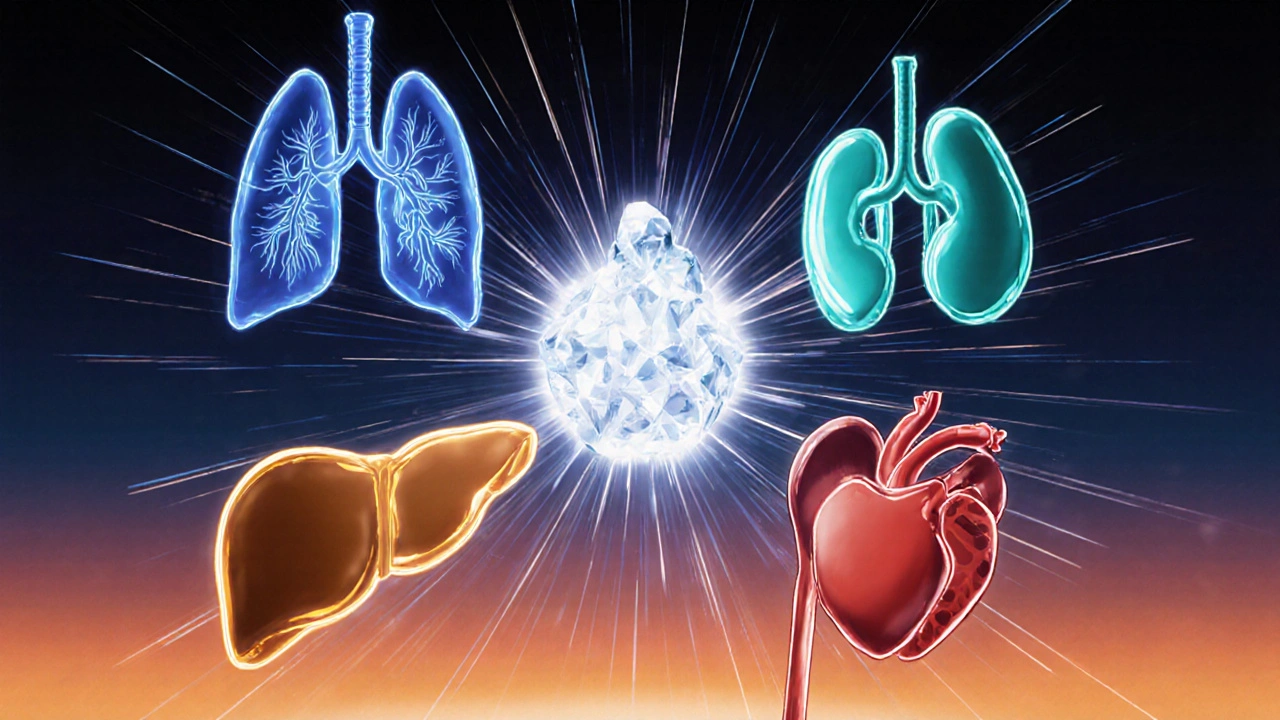A deep dive into pirfenidone’s anti‑fibrotic action, its approved use for IPF, and emerging evidence for treating systemic sclerosis, liver cirrhosis, renal fibrosis and more.
pirfenidone – What It Is, How It Works, and Why It Matters
When working with pirfenidone, an oral anti‑fibrotic drug approved for certain lung diseases. Also known as Esbriet, it slows scar tissue formation in the lungs and helps preserve breathing function. pirfenidone is a small‑molecule compound that interferes with pathways that turn normal lung cells into stiff, fibrotic tissue. Because it targets the disease process itself rather than just symptoms, doctors often recommend it early after diagnosis. The drug is taken three times a day with food to improve absorption and reduce stomach upset. While it can be a game‑changer for many patients, it also requires regular monitoring of liver enzymes and skin reactions, so staying in touch with your healthcare team is essential.
Key Related Concepts You’ll Encounter
The most common condition treated with pirfenidone is idiopathic pulmonary fibrosis, a progressive scarring of lung tissue with no clear cause. This disease slowly makes breathing harder and often leads to a decline in quality of life. Pirfenidone treats idiopathic pulmonary fibrosis by reducing the rate of fibrosis progression, which means patients can maintain better lung capacity for longer. Another crucial idea is anti‑fibrotic therapy, any treatment aimed at preventing or slowing tissue scarring. Anti‑fibrotic therapy requires regular liver function tests and skin checks because many agents, including pirfenidone, can affect these organs. Understanding how anti‑fibrotic therapy fits into a broader management plan helps patients and clinicians decide when to start, adjust, or combine treatments.
Beyond the core disease, you’ll also see references to clinical trials, research studies that test new drugs or new uses for existing drugs. Recent clinical trials have explored higher doses of pirfenidone, combination regimens with nintedanib, and long‑term safety up to five years. These studies show that patients who stick to the prescribed regimen often experience slower lung function decline compared with placebo groups. The data also highlight the importance of early intervention—starting pirfenidone soon after diagnosis tends to yield better outcomes. Finally, broader discussions about lung fibrosis, any condition where lung tissue becomes stiff and scarred bring in topics like oxygen therapy, pulmonary rehab, and lifestyle changes such as quitting smoking. Together, these entities form a network where pirfenidone sits at the center, supported by diagnosis, therapy, monitoring, and ongoing research. Below you’ll find a curated set of articles that dive deeper into each of these areas, offering practical tips, safety guidelines, and the latest evidence to help you manage lung fibrosis effectively.

